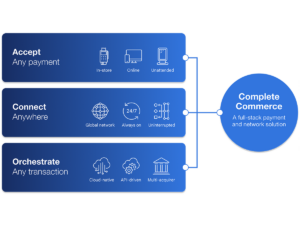While 5G and public networks have been on a collision course for several months, Dish Network put this process into hyperdrive in April by announcing it had selected Amazon Web Services (AWS) to host its RAN and core networks. Mobile World Live noted that it is the first time a US operator will run its customer-facing operations on public cloud-based infrastructure.
Dish Network is leading the way in moving to a cloud-based network but is not alone as other mobile operators have signaled similar – if less aggressive – moves. At the same time, Amazon is joined by Microsoft, Google and others in building and tailoring public cloud offerings to telecom operators.
Telcos and non-traditional operators will be closely watching Dish as it shifts nearly all of its network functions into a public cloud environment with a 5G core inside AWS. Will the shift deliver on unlocking new revenues and reducing costs, while increasing scalability and flexibility?
For telecom providers evaluating public cloud networks for their 5G core and hosting telco functions, it is important to understand the benefits and challenges of moving from a private to a public cloud environment.
Benefits of a 5G-Enabled Public Cloud
If telecom providers have learned anything the past several years, it is that the evolution of 5G (or any generation of mobile network) is not an overnight process. Transitioning to the public cloud for 5G is no different; there will be functions that telcos can swiftly move to the public cloud, and others with a more distant time horizon.
The speed with which telecom providers spin up 5G capabilities in the public cloud will in part be driven by gaining an understanding of the benefits:
- CapEx Savings. By not hosting networks on physical equipment that requires constant updates, operators are free from the capital spending it would take to maintain them. In the UK, mobile operator Three UK is already seeing the financial benefits of partnering with Microsoft Azure. Three has moved its IT workloads to Azure’s cloud infrastructure and will reduce IT costs by one-third.
- New Revenue Opportunities. The cloud will also enable telecom providers to offer new consumer 5G use cases creating increased opportunities to generate more revenue. The new services will be cultivated through improved responsiveness, flexibility and efficiency the networks receive from their new hosting location.
- Scalability and Flexibility. Hosting 5G networks in the public cloud will also improve operators’ agility and scalability functionality by enabling them to equip new customers with their services in a quicker manner than they previously could when hosting networks on physical servers. This in turn provides consumers with increased flexibility in terms of when they deploy and equip themselves with operators’ services.
- 5G Network Slicing. The ability to access network slices “as-a-Service” is a powerful value proposition for telcos. Delivering the features and functionality of a complete network in a single network slice, and running these networks on a single, shared infrastructure unlocks flexibility to tailor offerings based on each customer’s needs. Supporting 5G network slicing requires the flexibility and visibility that public clouds offer.
- Multi-Access Edge Computing. A second big enabler of the move to the cloud is 5G’s service-based architecture, which is very cloud-friendly. Service-based architecture is designed to power devices, software and solutions for added connectivity by combining 5G and edge computing. Ultimately, this enables providers the responsiveness, flexibility and efficiency to service customers, while using automation for ongoing operations.
- Security. Hosting a telecom network in the public cloud offers more flexibility, scalability reliability and visibility to an operator. But when it comes to an operator’s subscriber roaming out of its network, the operator loses control and is open to vulnerabilities. Also, the 5G core and access eco-system typically uses a lot of open source based network functions and tools which could potentially compromise security. Extra care needs to be taken by operators to protect on-net and off-net customers and use-cases while hosting network functions, tools and utilities on the public cloud networks.
How TNS Can Enable Your 5G Public Cloud Journey
For decades, TNS has addressed the evolving needs of network operators around the globe, and as the industry evolves to 5G, IoT and other technologies, TNS leads the development of solutions to help carriers navigate a host of infrastructure complexities and maximize their network reach.
A single connection to TNS provides connectivity to carriers around the globe and access to a suite of advanced roaming, network, database and device solutions, including a powerful LTE roaming hub platform. With roaming agreements, relationships, reach and services already in place, TNS is the optimal partner for operators to quickly and effectively tap into the operational and customer-facing benefits of the public cloud for 5G capabilities. Also, TNS has a vantage point, unlike home network operators, to identify, screen and filter messages with malicious intent. This makes TNS an ideal telecom firewall gateway partner to all its sub-tending CSP and enterprise customers.
To learn more about TNS’ Communications Market solutions, visit, https://tnsi.com/products/communications-market/.
Ramesh Chellamani is Director of Product Management, Network Services at TNS with specific responsibility for the network services solutions within TNS’ Communications Market business.






